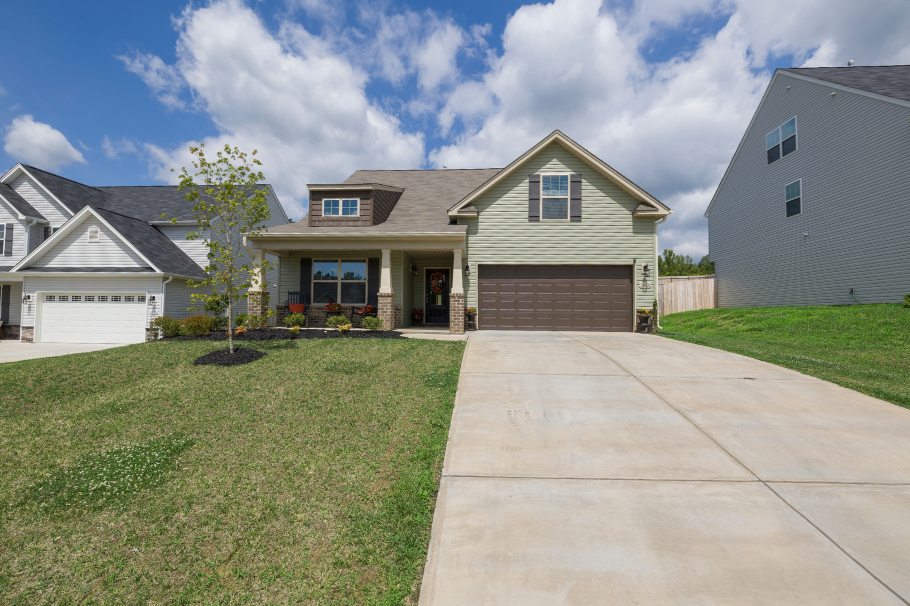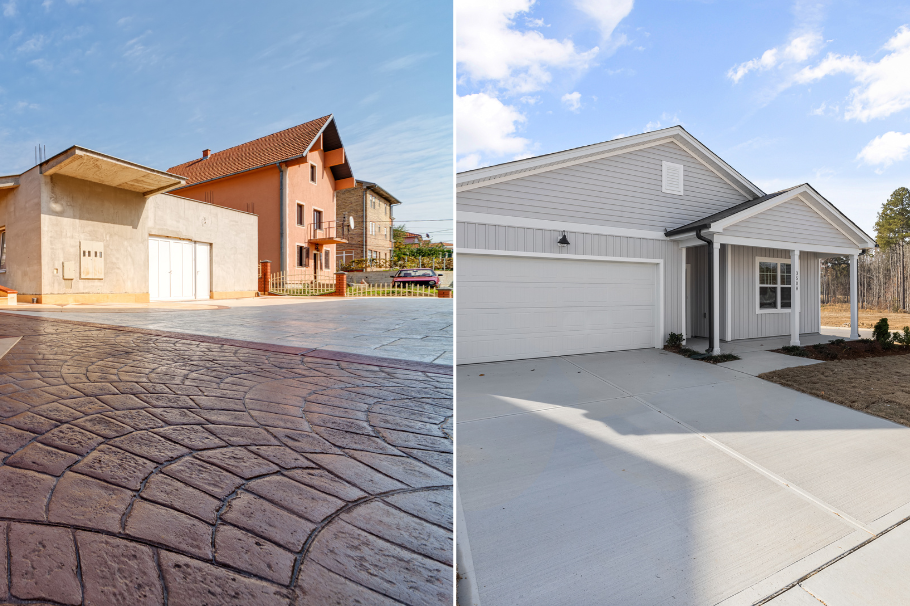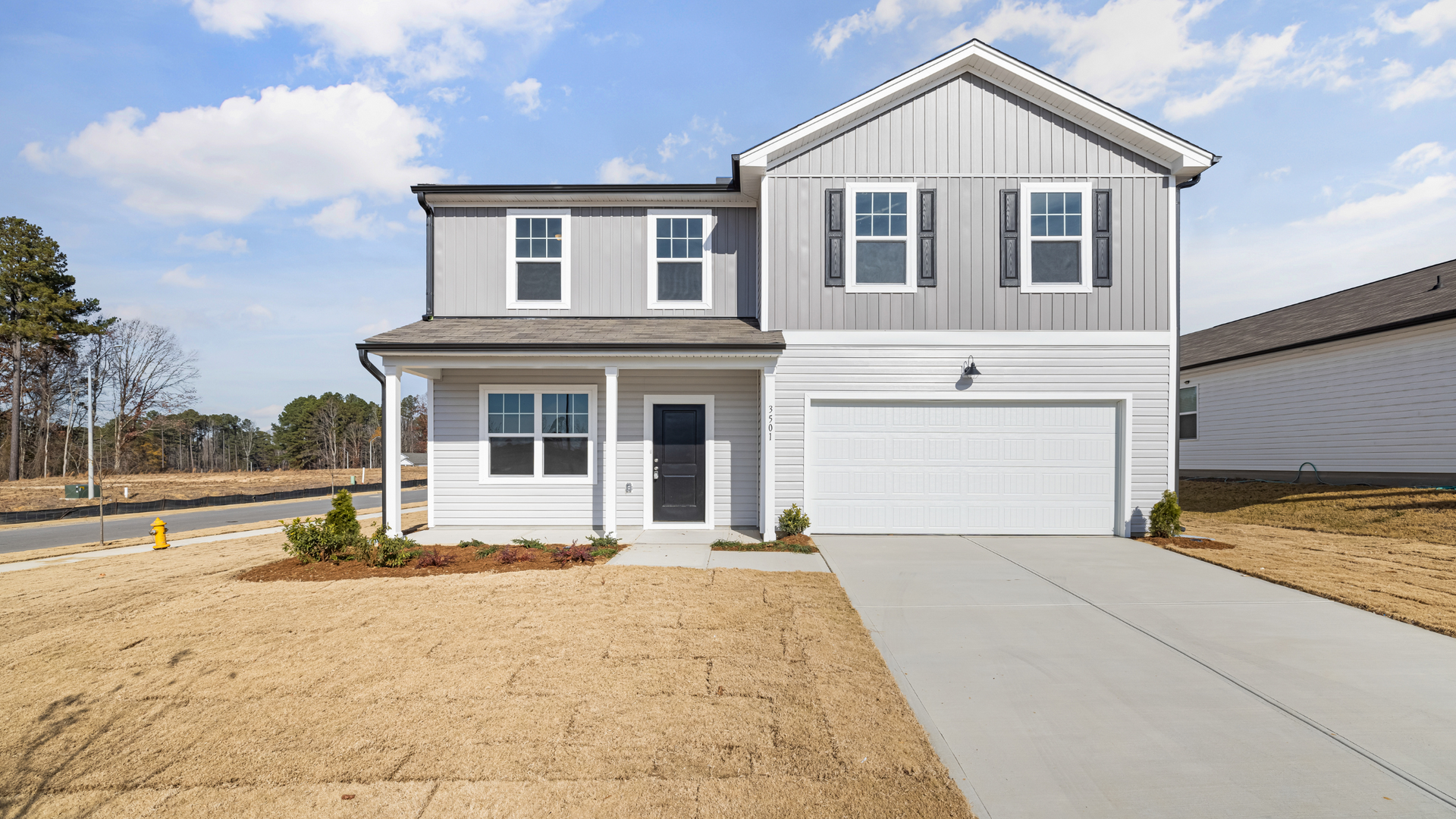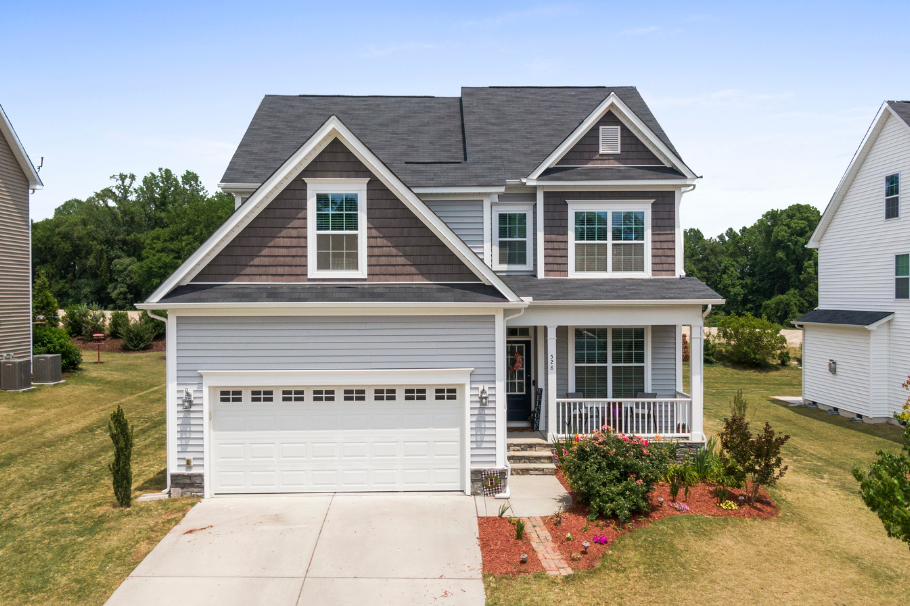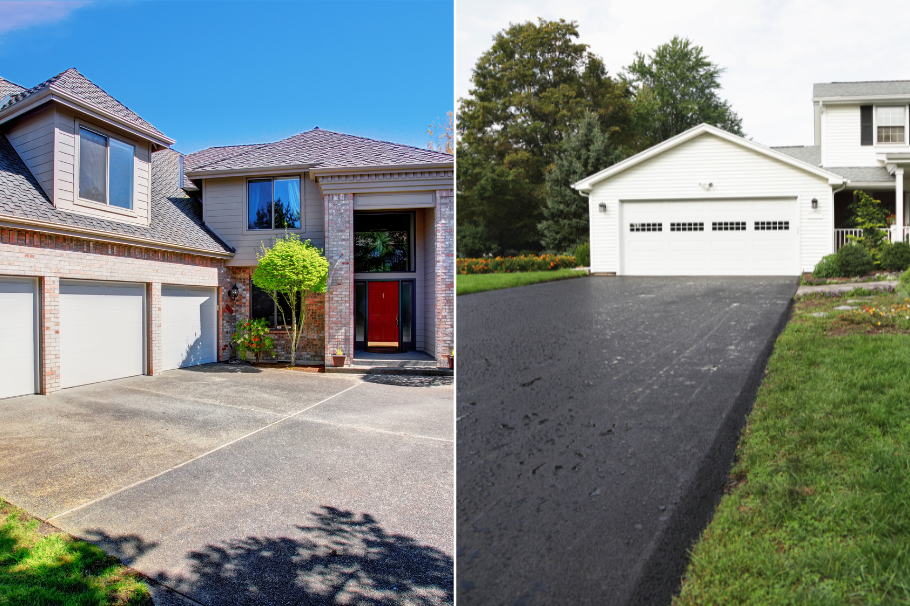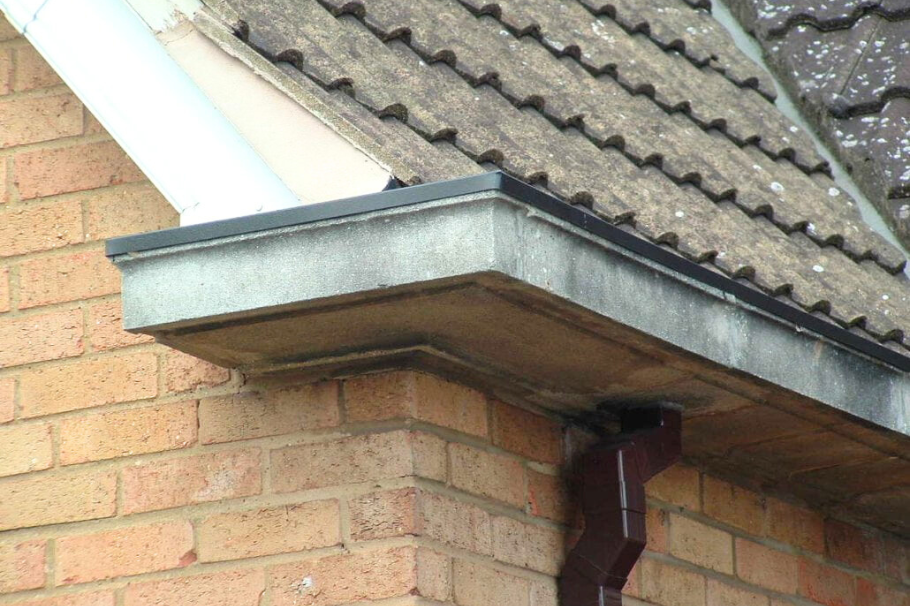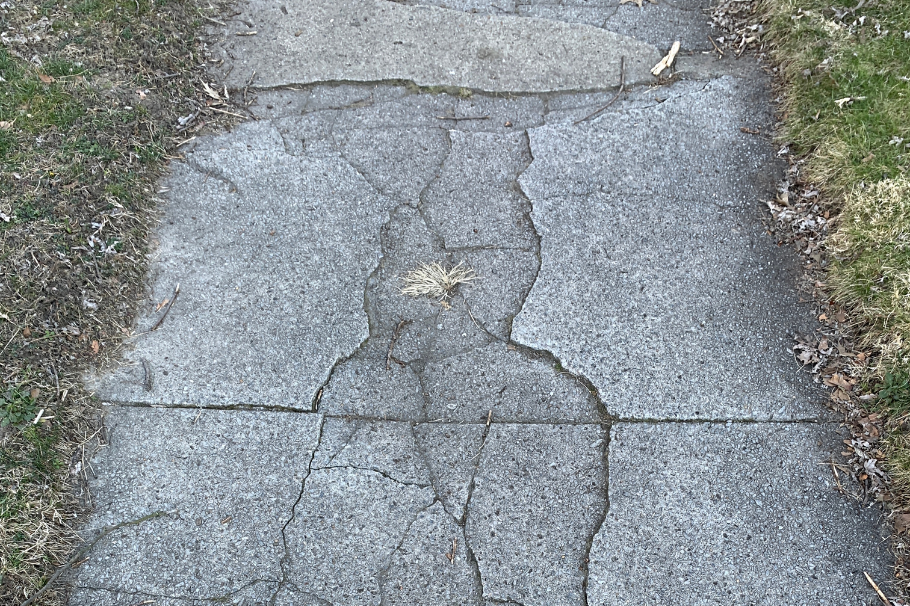Brick or Concrete Walkways: Which One Is Best for Your Home?
When it comes to creating a stunning outdoor space, walkways play a vital role. Moreover, choosing the right material is essential. Both brick and concrete walkways offer unique advantages, but deciding which one is best depends on your needs and preferences. In this blog, we’ll dive into the differences between brick and concrete walkways, comparing their durability, cost, maintenance, and aesthetics. Furthermore, we’ll provide statistics and data to help you make an informed choice.

What Are Brick Walkways?
Brick walkways are constructed using clay bricks arranged in various patterns. Additionally, they have been used for centuries, known for their classic and timeless appeal. Homeowners often choose brick for its durability and ability to blend seamlessly with traditional or rustic designs.
Take note, bricks come in various colors and sizes, allowing homeowners to create custom patterns and layouts that suit their style. The rustic charm of bricks often complements gardens, driveways, or older architectural styles, giving your home a cohesive look. Moreover, their non-slip surface makes them a safer choice for families, especially in areas prone to rain or snow.
What Are Concrete Walkways?
Concrete walkways are made by pouring a concrete mix into forms to create a smooth, uniform path. Moreover, concrete walkways are versatile and can mimic other materials like stone or wood through stamping and staining. Many modern homes favor concrete for its sleek, contemporary look.
Additionally, concrete allows for complete customization. With a wide array of colors, textures, and patterns, homeowners can design a walkway that matches their home’s aesthetics. For instance, stamped concrete can replicate the look of bricks, stones, or even wood at a fraction of the cost. Furthermore, polished concrete walkways add a glossy finish, perfect for achieving a modern and luxurious vibe.
Durability: Brick vs. Concrete Walkways
Durability is one of the most important factors when choosing a walkway material. Take note, brick walkways are highly durable and resistant to harsh weather conditions. However, they can crack or chip over time, especially under heavy foot traffic. On the other hand, concrete walkways are equally durable but may require sealing to prevent cracking from temperature changes.
Moreover, the durability of both materials depends on proper installation. Poorly laid brick walkways may become uneven due to shifting ground. Alternatively, concrete walkways need a solid foundation to avoid cracking or sinking. What’s more, both materials benefit from regular maintenance to ensure longevity.
Durability Comparison Table
| Material | Lifespan | Weather Resistance | Maintenance Needed |
|---|---|---|---|
| Brick Walkways | 25-100 years | Excellent | Medium |
| Concrete Walkways | 20-50 years | Good | Low |
Cost: Which Is More Affordable?
The cost of installation can vary significantly between brick and concrete walkways. Additionally, brick is generally more expensive due to the labor-intensive process of laying individual bricks. On average, brick walkways cost $16–$36 per square foot. Alternatively, concrete walkways are more budget-friendly, averaging $12–$24 per square foot.
Furthermore, costs can fluctuate depending on the complexity of the design. For example, intricate brick patterns or stamped concrete may increase the total price. What’s more, labor rates and material availability in your area can influence overall expenses.
Maintenance Requirements
Maintenance is another crucial factor to consider. Furthermore, brick walkways require regular upkeep to keep weeds from growing between the bricks. You may also need to relevel the bricks periodically. Comparatively, concrete walkways demand less maintenance. Sealing them every few years will help maintain their appearance and durability.
Additionally, weather conditions play a role in maintenance needs. For instance, brick walkways in snowy regions might require more frequent attention due to frost heaving. On the other hand, concrete walkways may develop stains from water or chemicals but are easier to clean with a power washer.
Maintenance Frequency Table
| Material | Maintenance Task | Frequency | Cost (Average) |
|---|---|---|---|
| Brick Walkways | Weed Removal | Monthly | $40-$100 |
| Concrete Walkways | Sealing | Every 3-5 years | $100-$400 |
Aesthetic Appeal
Aesthetics play a major role in enhancing curb appeal. Moreover, brick walkways exude a traditional charm that complements older or classic-style homes. What’s more, the variety of brick patterns allows for creative designs. On the contrary, concrete walkways offer endless possibilities for customization. Stamped and stained concrete can mimic more expensive materials, giving your outdoor space a luxurious feel without the high cost.
Additionally, color options for concrete allow homeowners to match their walkway with outdoor decor or landscaping. For example, earthy tones create a natural look, while bold hues make a striking statement. Moreover, combining textures and patterns in concrete walkways adds depth and visual interest to any outdoor space.
Weather Performance
Weather can significantly impact the longevity of your walkway. Additionally, brick walkways are porous, making them prone to frost heaving in freezing temperatures. Concrete walkways, with proper sealing, can withstand various weather conditions better. However, without proper maintenance, concrete can develop cracks due to temperature fluctuations.
Moreover, areas with heavy rainfall may benefit from concrete’s ability to resist water absorption when sealed. Brick walkways, while beautiful, might require additional drainage solutions to prevent water pooling.
Environmental Impact
If sustainability is a priority, you’ll want to consider the environmental impact of each material. Take note, bricks are made from natural clay, making them eco-friendly and recyclable. Concrete walkways, however, have a larger carbon footprint due to the production process of cement.
Furthermore, using locally sourced materials can reduce the environmental impact of your project. Reclaimed bricks offer an eco-friendly option for those interested in sustainability. What’s more, advancements in concrete technology now allow for greener mixes that include recycled aggregates.
Popularity Among Homeowners
Concrete walkways are currently more popular among homeowners due to their versatility and affordability. Furthermore, a recent survey found that homeowners prefer concrete for outdoor spaces. However, brick walkways still hold their charm for those seeking a classic aesthetic.
Moreover, concrete is often the go-to choice for large projects like driveways and patios due to its lower cost and quicker installation. Brick walkways, while pricier, remain a favorite for smaller, decorative pathways.
Which Walkway Material Is Best for Your Home?
Ultimately, the best walkway material depends on your specific needs. If you value a timeless, traditional look, brick walkways are an excellent choice. Alternatively, if you’re looking for affordability and modern design options, concrete walkways are a better fit.
Key Features at a Glance
| Material | Maintenance Task | Frequency | Cost (Average) |
|---|---|---|---|
| Brick Walkways | Weed Removal | Monthly | $40-$100 |
| Concrete Walkways | Sealing | Every 3-5 years | $100-$400 |
Common Questions About Walkways
Are Brick Walkways More Durable Than Concrete Walkways?
- Brick walkways are highly durable but require more maintenance to prevent uneven surfaces. Concrete walkways are durable but may crack over time without proper sealing.
Which Is Easier to Maintain: Brick or Concrete Walkways?
- Concrete walkways are easier to maintain due to their solid surface. Brick walkways require frequent weed removal and releveling.
Can You Customize Both Brick and Concrete Walkways?
- Yes, both materials offer customization. Concrete walkways have more options with stamping and staining techniques.
Our Final Recommendation
When it comes to choosing between brick and concrete walkways, there’s no one-size-fits-all answer. Moreover, your choice depends on your budget, aesthetic preferences, and willingness to maintain the walkway. If you’re still unsure, AMC Concrete can help.
At AMC Concrete, we specialize in creating durable and beautiful concrete walkways that enhance your home’s value and functionality. What’s more, we offer expert guidance to ensure you make the right choice for your needs. Contact us today to discuss your project ideas. Book a free consultation now!
Call us at: (931) 281 8528
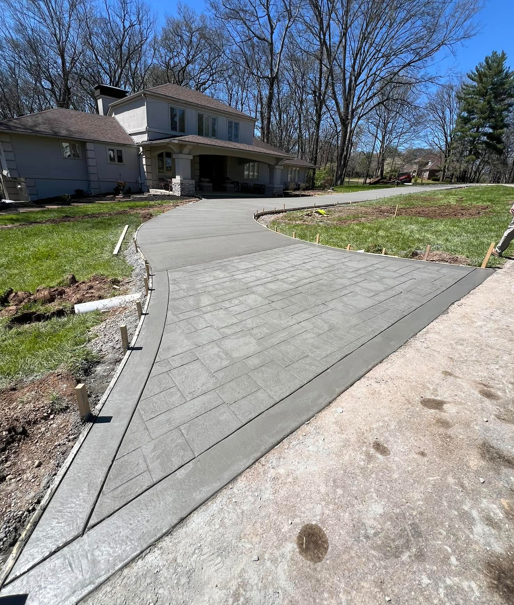
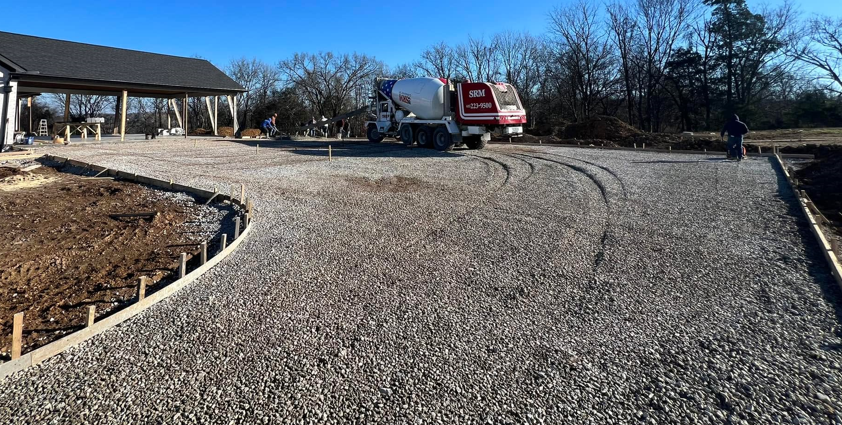
All rights reserved by AMC Concrete
